Effects of Cold Swaging on Mechanical Properties and Magnetic Susceptibility of the Zr–1Mo Alloy
Abstract
:1. Introduction
2. Materials and Methods
2.1. Process and Materials
2.2. Characterization of Microstructure
2.3. Evaluation of Mechanical Properties
2.4. Measurement of Magnetic Susceptibility
3. Results and Discussion
3.1. Microstructure
3.2. Mechanical Properties
3.3. Magnetic Susceptibility
4. Conclusions
Author Contributions
Funding
Acknowledgments
Conflicts of Interest
References
- Imai, H.; Tanaka, Y.; Nomura, N.; Tsutsumi, Y.; Doi, H.; Kanno, Z.; Ohno, K.; Ono, T.; Hanawa, T. Three-dimensional quantification of susceptibility artifacts from various metals in magnetic resonance images. Acta Biomater. 2013, 9, 8433–8439. [Google Scholar] [CrossRef] [PubMed]
- Zhou, F.Y.; Wang, B.L.; Qiu, K.J.; Li, L.; Lin, J.P.; Li, H.F.; Zheng, Y.F. Microstructure, mechanical property, corrosion behavior, and in vitro biocompatibility of Zr–Mo alloys. J. Biomed. Mater. Res. Part B 2013, 101, 237–246. [Google Scholar] [CrossRef] [PubMed]
- Kondo, R.; Shimizu, R.; Nomura, N.; Doi, H.; Suyalatu; Tsutsumi, Y.; Mitsuishi, K.; Shimojo, M.; Noda, K.; Hanawa, T. Effect of cold rolling on the magnetic susceptibility of Zr–14Nb alloy. Acta Biomater. 2013, 9, 5795–5801. [Google Scholar] [CrossRef] [PubMed]
- Yang, H.L.; Kano, S.; Matsukawa, Y.; Li, Y.F.; Shen, J.J.; Li, F.; Zhao, Z.S.; Satoh, Y.; Abe, H. Effect of molybdenum on microstructures in Zr–1.2Nb alloys after β-quenching and subsequently 873 K annealing. Mater. Des. 2016, 104, 355–364. [Google Scholar] [CrossRef]
- Kajima, Y.; Takaichi, A.; Yasue, T.; Doi, H.; Takahashi, H.; Hanawa, T.; Wakabayashi, N. Evaluation of the shear bond strength of dental porcelain and the low magnetic susceptibility Zr–14Nb alloy. J. Mech. Behav. Biomed. Mater. 2016, 53, 131–141. [Google Scholar] [CrossRef] [PubMed]
- Kondo, R.; Nomura, N.; Suyalatu; Tsutsumi, Y.; Doi, H.; Hanawa, T. Microstructure and mechanical properties of as-cast Zr–Nb alloys. Acta Biomater. 2011, 7, 4278–4284. [Google Scholar] [CrossRef] [PubMed]
- Zhao, X.L.; Li, L.; Niinomi, M.; Nakai, M.; Zhang, D.L.; Suryanarayana, C. Metastable Zr–Nb alloys for spinal fixation rods with tunable Young’s modulus and low magnetic resonance susceptibility. Acta Biomater. 2017, 62, 372–384. [Google Scholar] [CrossRef] [PubMed]
- Lim, Y.S.; Kim, H.G.; Jeong, Y.H. Recrystallization behavior of Zr–xNb alloys. Mater. Trans. 2008, 49, 1702–1705. [Google Scholar] [CrossRef]
- Zhou, F.Y.; Wang, B.L.; Qiu, K.J.; Lin, W.J.; Li, L.; Wang, Y.B.; Nie, F.L.; Zheng, Y.F. Microstructure, corrosion behavior and cytotoxicity of Zr–Nb alloys for biomedical application. Mater. Sci. Eng. C 2013, 32, 851–857. [Google Scholar] [CrossRef]
- Suyalatu; Nomura, N.; Oya, K.; Tanaka, Y.; Kondo, R.; Doi, H.; Tsutsumi, Y.; Hanawa, T. Microstructure and magnetic susceptibility of as-cast Zr–Mo alloys. Acta Biomater. 2010, 6, 1033–1038. [Google Scholar]
- Hong, S.P.; Ko, Y.M.; Kim, C.S. Magnetic susceptibility of Zr–Cu binary alloys. Mater. Trans. 2014, 55, 1634–1636. [Google Scholar] [CrossRef]
- Li, H.F.; Zhou, F.Y.; Li, L.; Zheng, Y.F. Design and development of novel MRI compatible zirconium–ruthenium alloys with ultralow magnetic susceptibility. Sci. Rep. 2016, 6, 24414. [Google Scholar] [CrossRef] [PubMed]
- Banerjee, S.; Mukhopadhyay, P. Martensitic transformations. In Phase Transformations: Examples from Titanium and Zirconium Alloys, 1st ed.; Cahn, R.W., Ed.; Elsevier Science: London, UK, 2007; pp. 282–283. ISBN 978-0-08-042145-2. [Google Scholar]
- Zhou, F.Y.; Qiu, K.J.; Li, H.F.; Huang, T.; Wang, B.L.; Li, L.; Zheng, Y.F. Screening on binary Zr–1X (X = Ti, Nb, Mo, Cu, Au, Pd, Ag, Ru, Hf and Bi) alloys with good in vitro cytocompatibility and magnetic resonance imaging compatibility. Acta Biomater. 2013, 9, 9578–9587. [Google Scholar] [CrossRef] [PubMed]
- Ashida, M.; Sugimoto, T.; Nomura, N.; Tsutsumi, Y.; Chen, P.; Doi, H.; Hanawa, T. Microstructure and mechanical properties of large-scale ingots of the Zr–1Mo alloy. Mater. Trans. 2015, 56, 1544–1548. [Google Scholar] [CrossRef]
- Guo, W.Y.; Xing, H.; Sun, J.; Lix, L.; Wu, J.S.; Chen, R. Evolution of microstructure and texture during recrystallization of the cold-swaged Ti–Nb–Ta–Zr–O alloy. Metall. Mater. Trans. A 2008, 39, 672–678. [Google Scholar] [CrossRef]
- Jung, T.; Semboshi, S.; Masahashi, N.; Hanada, S. Mechanical properties and microstructures of β Ti–25Nb–11Sn ternary alloy for biomedical applications. Mater. Sci. Eng. C 2013, 33, 1629–1635. [Google Scholar] [CrossRef] [PubMed]
- Niinomi, M.; Hattori, T.; Morikawa, K.; Kasuga, T.; Suzuki, A.; Fukui, H.; Niwa, S. Development of low rigidity β-type titanium alloy for biomedical applications. Mater. Trans. 2002, 43, 2970–2977. [Google Scholar] [CrossRef]
- Akhtar, A. Schmid’s law and prismatic slip of zirconium. Scr. Mater. 1975, 9, 859–861. [Google Scholar] [CrossRef]
- Tewari, R.; Srivastava, D.; Dey, G.K.; Chakravarty, J.K.; Banerjee, S. Microstructural evolution in zirconium based alloys. J. Nucl. Mater. 2008, 383, 153–171. [Google Scholar] [CrossRef]
- Niinomi, M. Recent metallic materials for biomedical applications. Metall. Mater. Trans. A 2002, 33, 477–486. [Google Scholar] [CrossRef]
- Imai, H.; Tanaka, Y.; Nomura, N.; Doi, H.; Tsutsumi, Y.; Ono, T.; Hanawa, T. Magnetic susceptibility, artifact volume in MRI, and tensile properties of swaged Zr–Ag composites for biomedical applications. J. Mech. Behav. Biomed. 2017, 9, 5795–5801. [Google Scholar] [CrossRef] [PubMed]
- Martienssen, W.; Warlimont, H. The elements. In Springer Handbook of Condensed Matter and Materials Data; Springer: Berlin/Heidelberg, Germany, 2005; pp. 45–158. ISBN 978-3-540-44376-6. [Google Scholar]
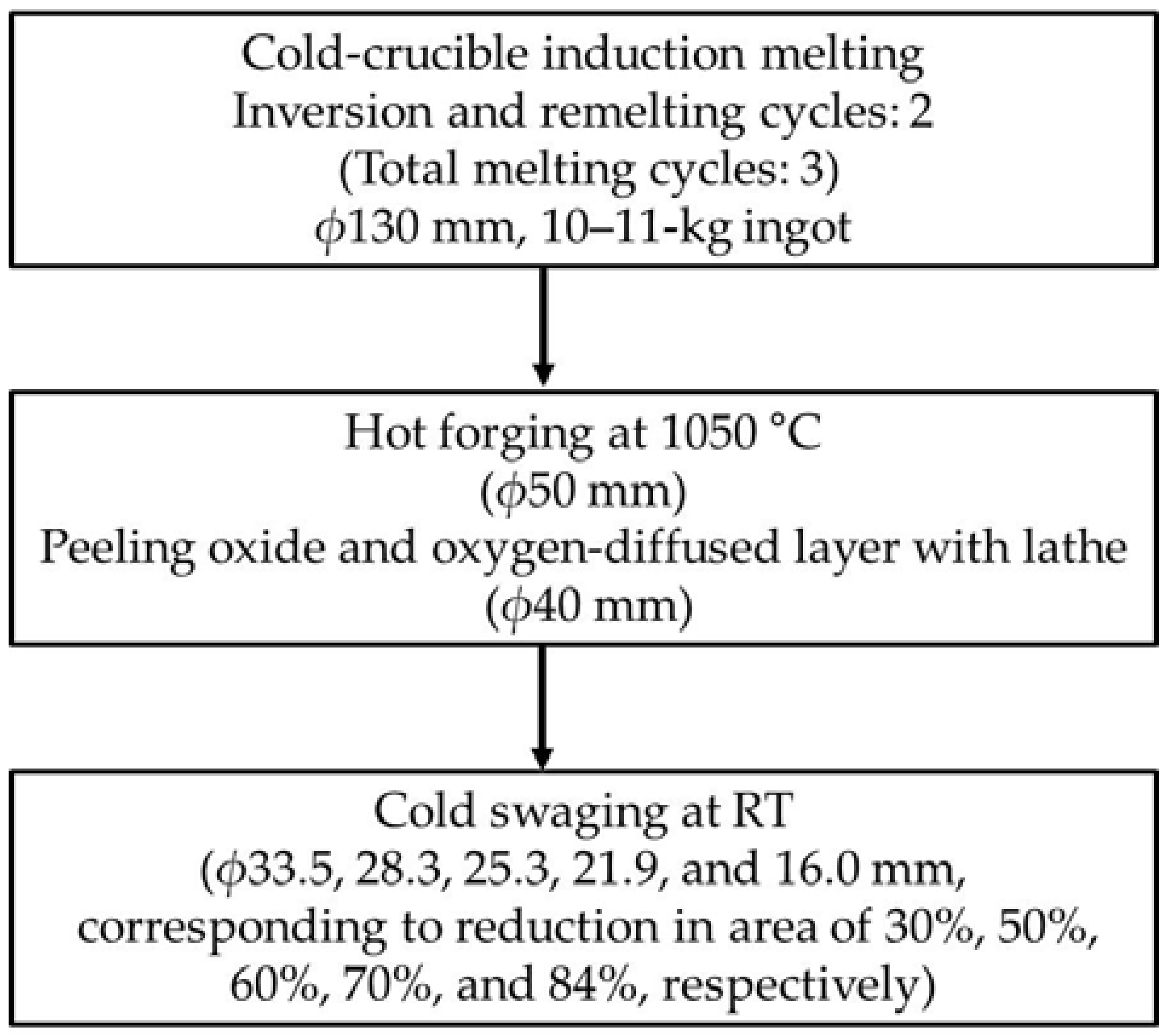
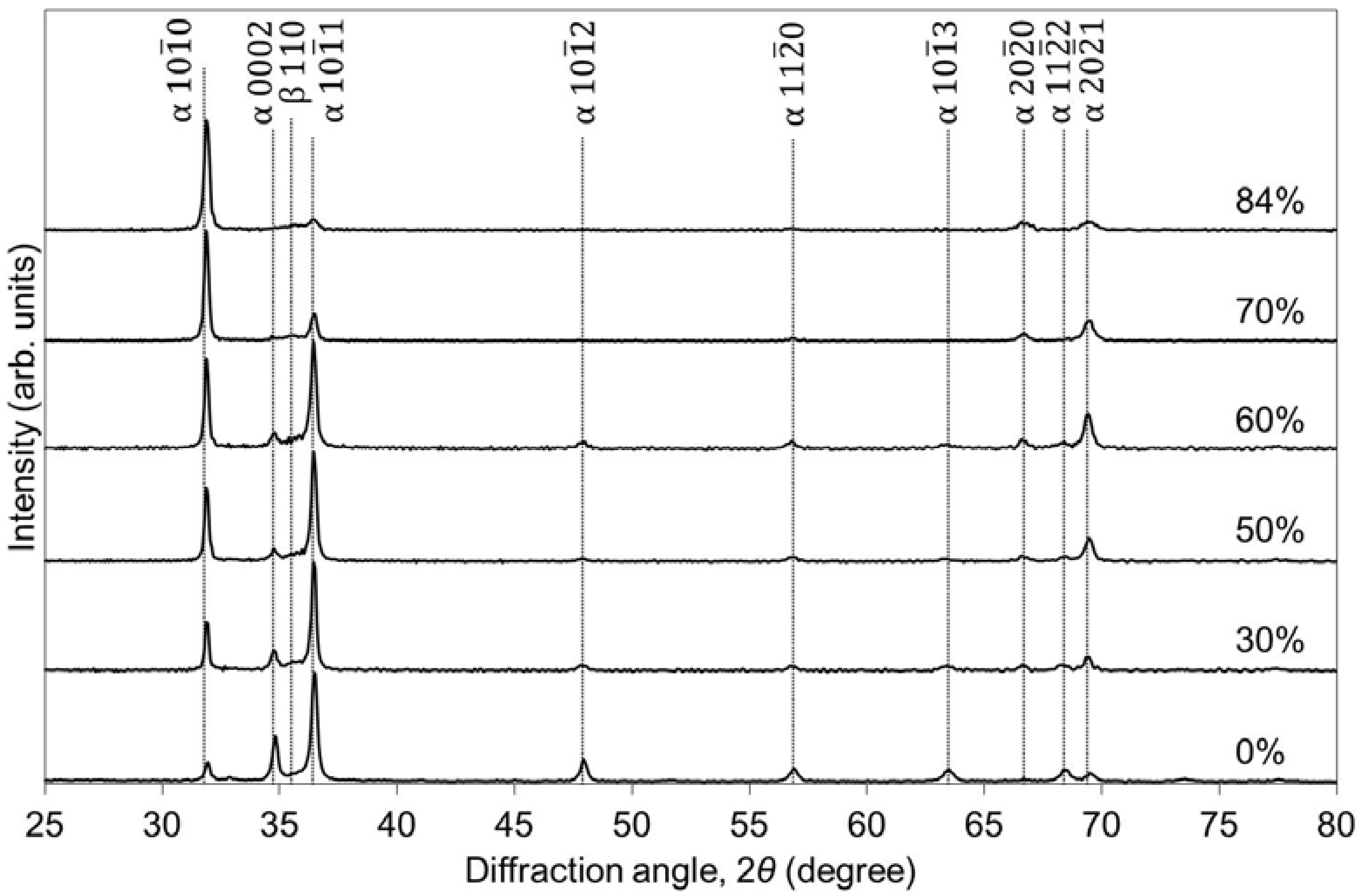
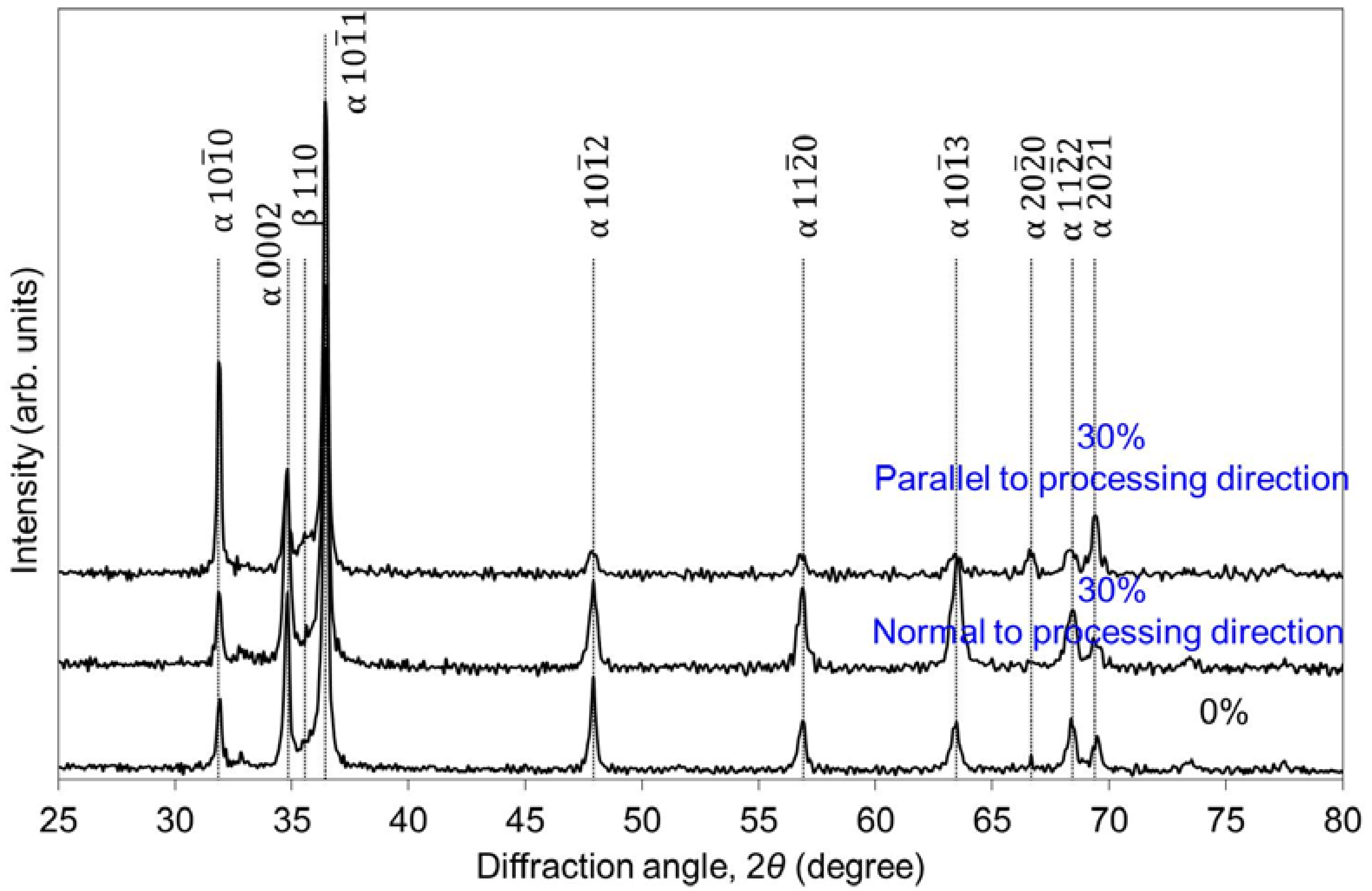
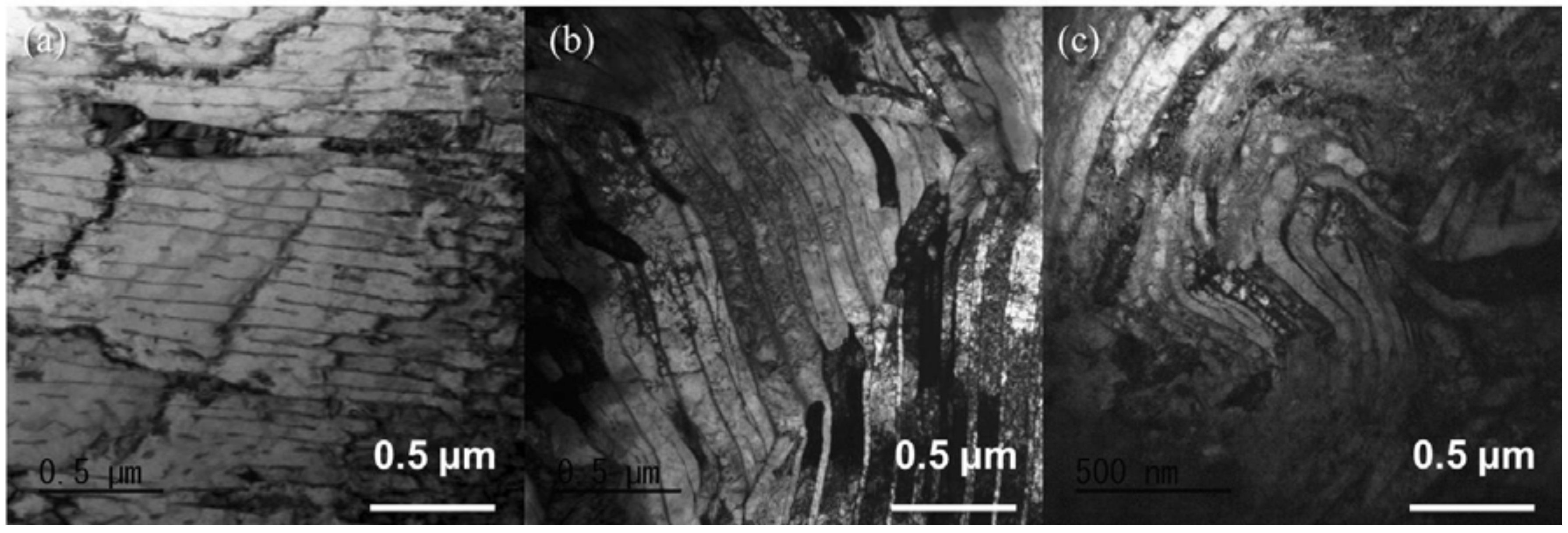
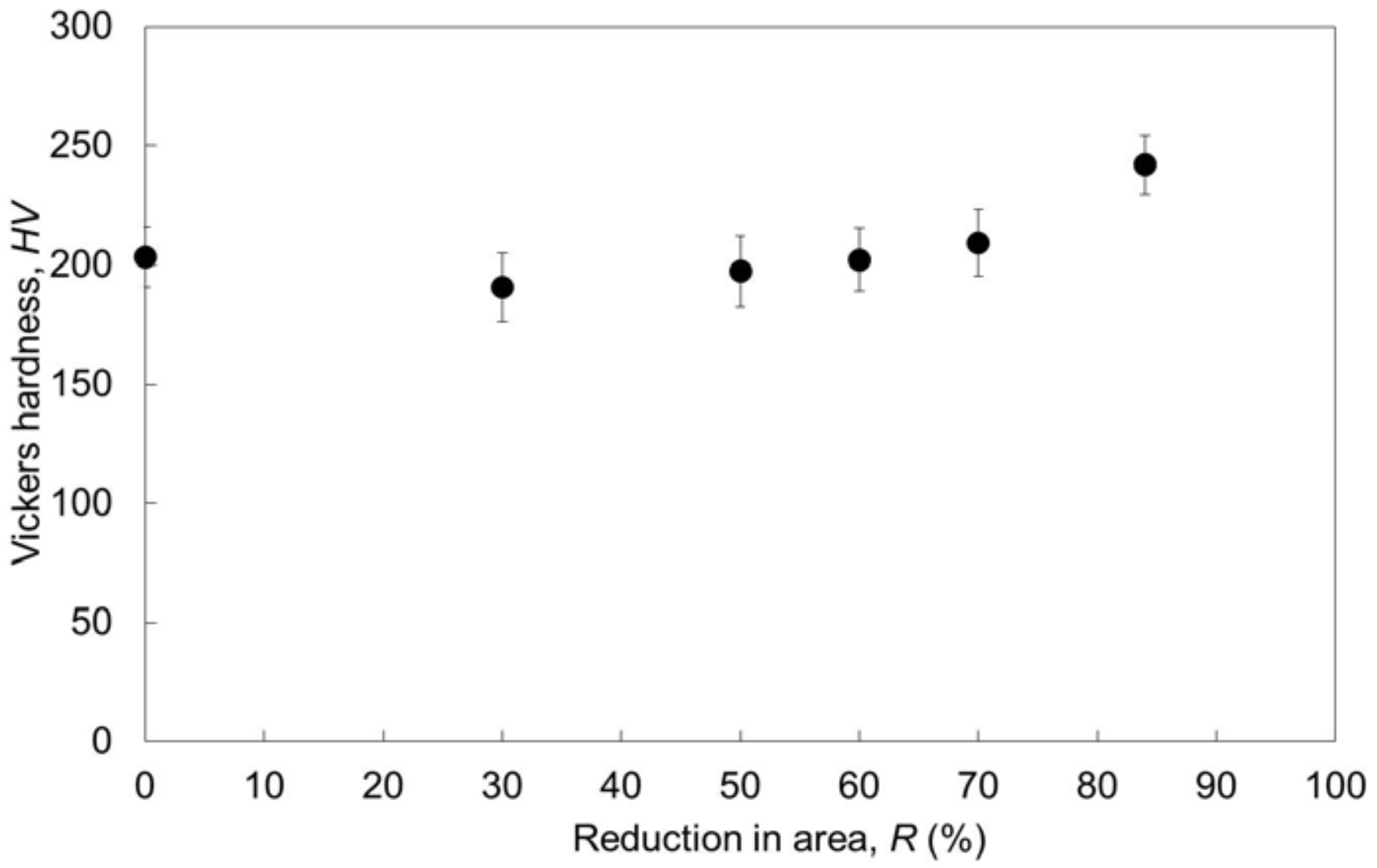
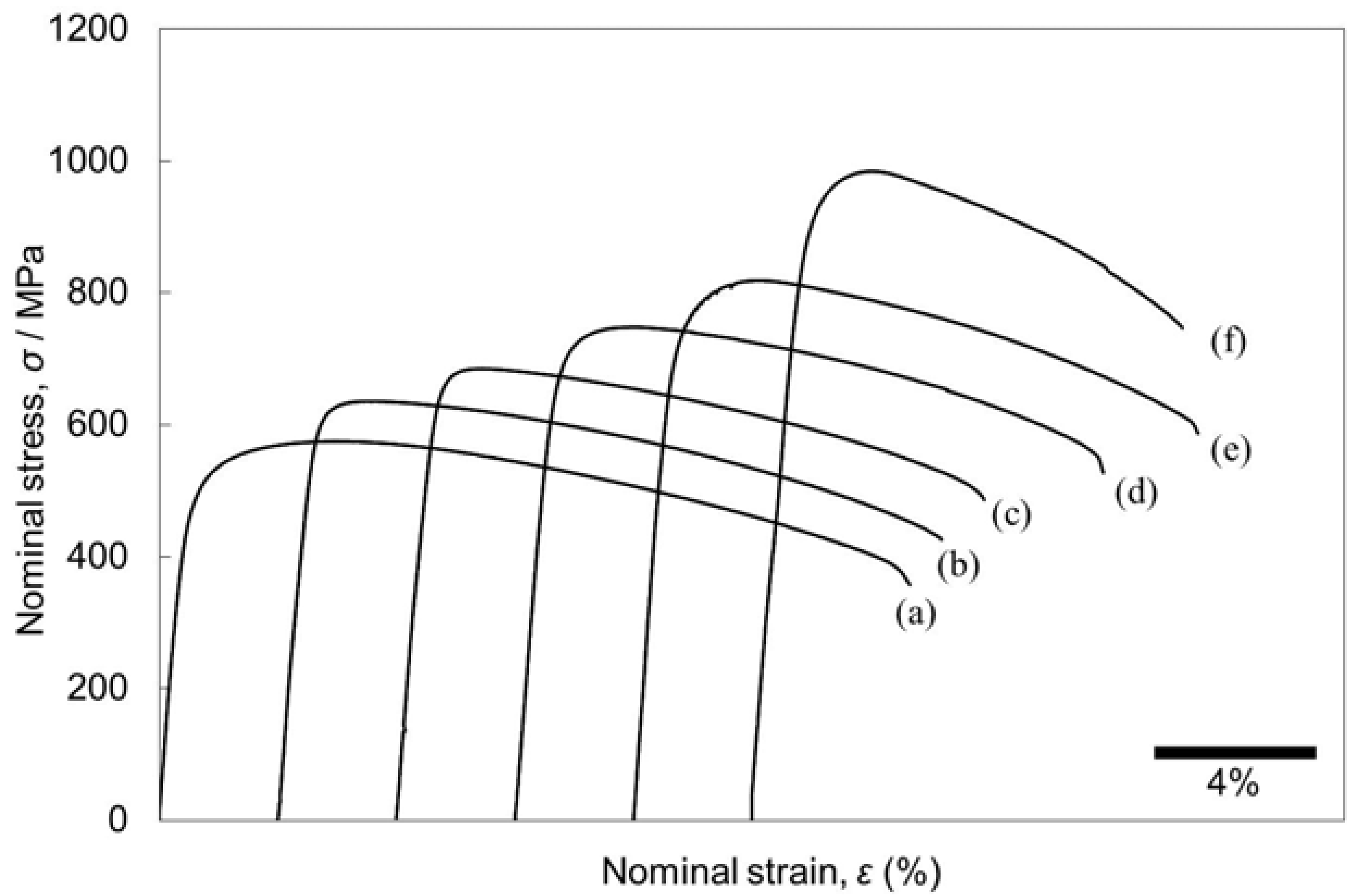
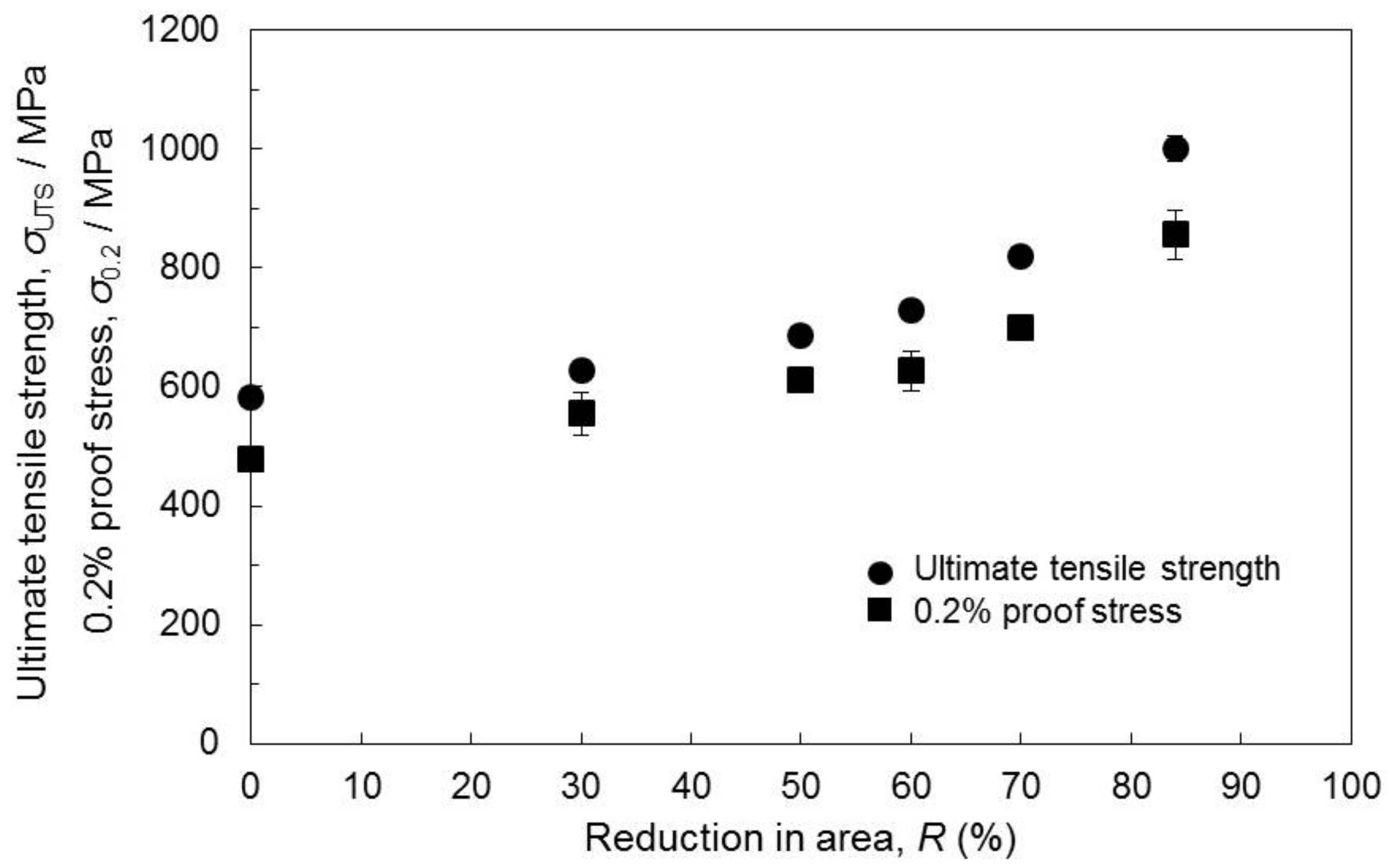

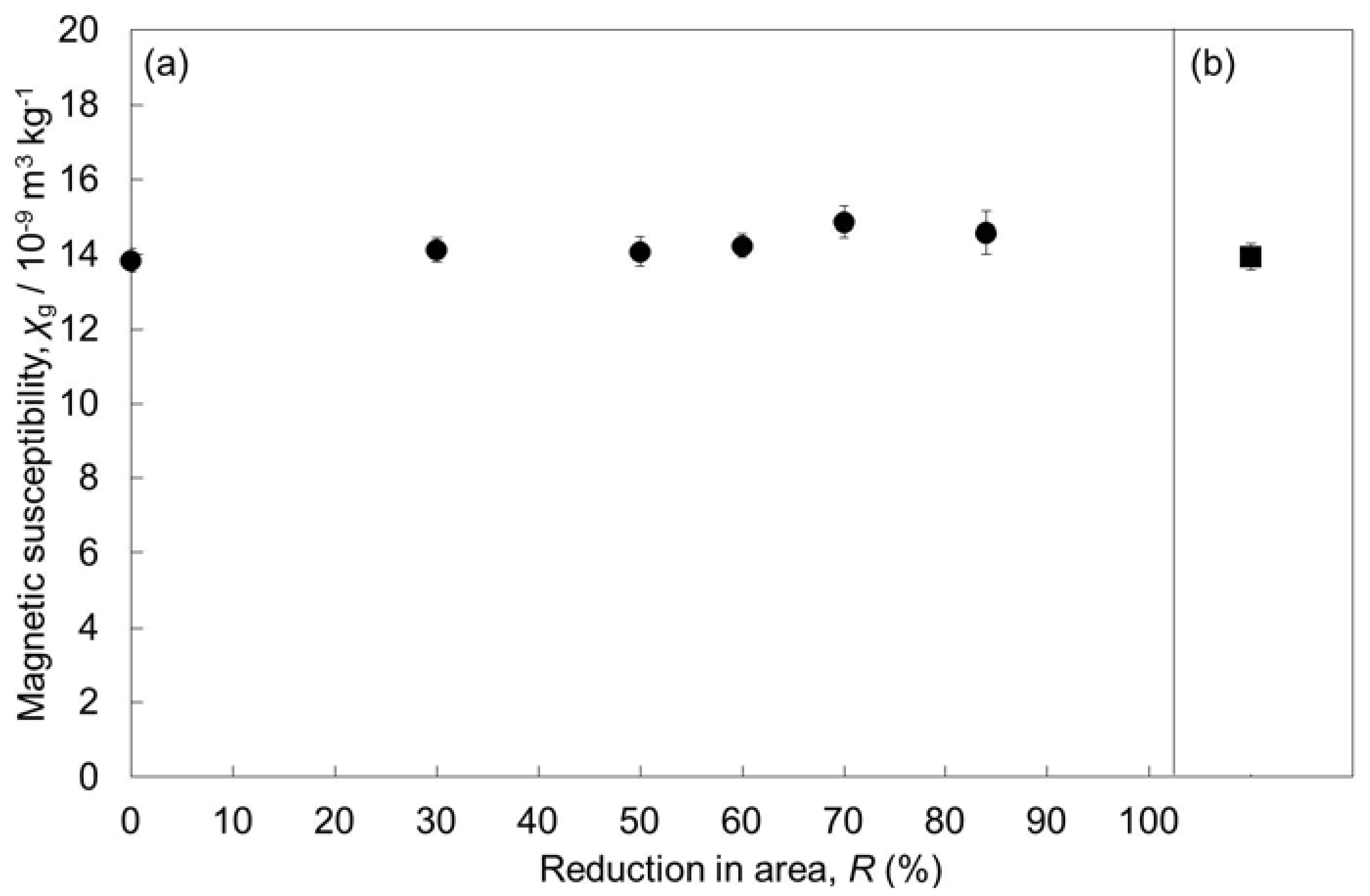
© 2018 by the authors. Licensee MDPI, Basel, Switzerland. This article is an open access article distributed under the terms and conditions of the Creative Commons Attribution (CC BY) license (http://creativecommons.org/licenses/by/4.0/).
Share and Cite
Ashida, M.; Morita, M.; Tsutsumi, Y.; Nomura, N.; Doi, H.; Chen, P.; Hanawa, T. Effects of Cold Swaging on Mechanical Properties and Magnetic Susceptibility of the Zr–1Mo Alloy. Metals 2018, 8, 454. https://doi.org/10.3390/met8060454
Ashida M, Morita M, Tsutsumi Y, Nomura N, Doi H, Chen P, Hanawa T. Effects of Cold Swaging on Mechanical Properties and Magnetic Susceptibility of the Zr–1Mo Alloy. Metals. 2018; 8(6):454. https://doi.org/10.3390/met8060454
Chicago/Turabian StyleAshida, Maki, Masahiro Morita, Yusuke Tsutsumi, Naoyuki Nomura, Hisashi Doi, Peng Chen, and Takao Hanawa. 2018. "Effects of Cold Swaging on Mechanical Properties and Magnetic Susceptibility of the Zr–1Mo Alloy" Metals 8, no. 6: 454. https://doi.org/10.3390/met8060454



